Pompeii is an extraordinary window into life in the Roman Empire—an entire city frozen in time by the catastrophic eruption of Mount Vesuvius in 79 AD. Covered in volcanic ash and hidden underground for centuries, this ancient settlement has been excavated to reveal an incredibly well-preserved urban landscape. Exploring these ruins can feel like stepping into a parallel world, where streets, plazas, and buildings remain in a state of suspended animation.
Yet, navigating Pompeii involves more than merely wandering its dusty alleys. Practical details about tickets, tours, entrances, and the historical context will enrich your journey. A bit of planning elevates a basic sightseeing trip into a deeply immersive experience.
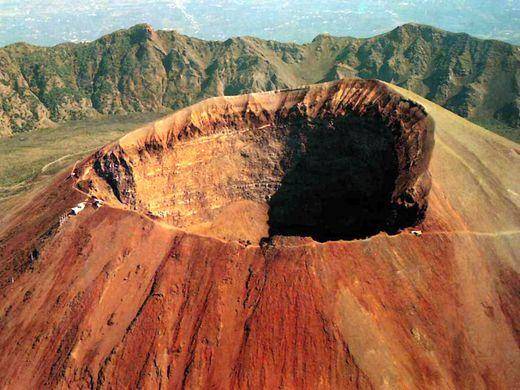
Mount Vesuvius
Why Visit Pompeii?
There is something uniquely spellbinding about seeing a place that was both destroyed and preserved by the same catastrophic force. Volcanic ash obliterated daily life in Pompeii yet also sealed its architecture, artworks, and final moments beneath a protective layer. This paradox grants a rare glimpse into Roman culture that few ancient ruins can match.
Is it possible for a site to be both a tragic disaster and a miraculous time capsule? Reflecting on that question is part of what makes Pompeii so deeply moving. The city is sprawling, filled with hidden alcoves and intricate details, leaving you to wonder whether you are walking through a monument to life or a relic of death—or perhaps both.
Historical Background in Brief
The Unesco World Heritage site Pompeii was once a flourishing Roman city with a population exceeding 10,000 residents, thanks to the region’s fertile soil and extensive trade routes. Earthquakes were common, and some even foreshadowed the catastrophic eruption in 79 AD, though few inhabitants chose to relocate. When Mount Vesuvius finally unleashed its fury, toxic gases and ash suffocated the remaining residents. Over time, the ash hardened, shielding the city from moisture and harsh weather conditions.
The first clue to Pompeii’s buried existence appeared in 1599, when part of the underground structures was inadvertently discovered. Formal excavations began around 1748. Astoundingly, archaeologists estimate that roughly 70% of the site remains buried, awaiting future exploration. This incomplete excavation process can give visitors an ongoing sense of discovery as they walk the ancient streets, always wondering what else might still lie beneath the dust.
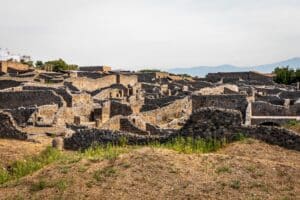
Best Pompeii Tours
Pompeii is filled with temples, public squares, private residences, and entertainment venues. Below are some key spots that offer a logical route starting near the Piazza Anfiteatro entrance and winding through the main attractions.
Amphitheatre: As one of the oldest known amphitheatres in the Roman world, it could seat up to 20,000 spectators. Standing on the arena floor can easily trigger the imagination—envisioning the rowdy crowds that once packed these stands.
Large Palaestra: Adjacent to the amphitheatre, this expansive open area was a training ground for physical and intellectual pursuits. Picture ancient youths honing their skills under the colonnades.
Residential Houses: Pompeii’s allure lies not just in its grand public buildings but also in the private homes, which reveal slices of daily life:
- House of Venus in the Shell: Famous for its vibrant frescoes, particularly the depiction of Venus, it offers an intimate glimpse into Roman domestic art.
- House of Octavius Quartio: Features a smaller-scale version of a lavish villa, complete with elegant water features.
- House of the Faun: One of the largest and most opulent residences in Pompeii, showcasing two atriums, a spacious courtyard, and replicas of famous mosaics.
- House of the Tragic Poet: Recognized for the “Cave Canem” (“Beware of the Dog”) mosaic at the entrance, reminding visitors that guard dogs have been a household norm since ancient times.
Forum and Surrounding Monuments:
- Forum: Once the social, political, and commercial heart of Pompeii, it is surrounded by important administrative and religious buildings.
- Temple of Jupiter: Perched at the forum’s northern edge, it once housed statues of principal Roman deities. Mount Vesuvius forms an imposing backdrop, a constant reminder of Pompeii’s fate.
- Basilica: Functioned as an administrative and judicial center. Its surviving stucco work hints at the city’s sophisticated architecture.
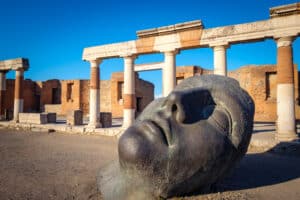
Best Pompeii Tours – Forum and Surrounding Monuments
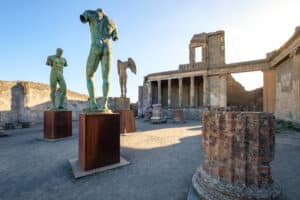
Forum and Surrounding Monuments – Pompeii
Sanctuary of Apollo: Among Pompeii’s earliest religious structures, dating back to the 6th century BC. This sanctuary underscores Apollo’s importance to ancient worshippers.
Grand Theatre: Carved into a slope, the Grand Theatre once hosted comedic and tragic performances. Nearby, the smaller Odeon was used for more intimate events, such as musical recitals.
Forum Baths: Surprisingly advanced for their time, these communal baths featured separate hot, warm, and cold rooms. Walking through the dim corridors can feel like stepping into the daily rituals of ancient Romans.
Forum Granary: Originally a produce market, this area now stores a variety of excavated artifacts, including ceramic jars and even plaster casts of victims. Seeing these casts up close can evoke a profound sense of both awe and sorrow.
Pompeii welcomes travelers to step back in time, meander through remarkably preserved architecture, and glean vivid insights into Roman civilization. The surrounding region—encompassing Mount Vesuvius, other archaeological sites like Herculaneum, and the vibrant city of Naples—provides a well-rounded journey for history enthusiasts and casual visitors alike.
By preparing strategically—choosing convenient entrances, using reliable transportation, and deciding on either a guided or independent exploration—you can make the most of your visit. Within these ruins, each fresco, mosaic, and stone has a distinct story to share. By exploring Pompeii with curiosity and respect, you help keep those ancient voices alive, reminding us of history’s delicate balance between destruction and preservation.
Experiencing Pompeii can be profoundly moving: it blends admiration for ancient achievements with the sobering reflection of a city silenced in a single catastrophic event. In its enduring stillness lies a powerful reminder that history can be at once fleeting and lasting—shattered in a moment, yet preserved for centuries to come.
Best Pompeii Tours & Tickets:
We regularly research and compare the Best Pompeii Tours & Tickets for you. You can find Pompeii Guided Tours, Pompeii Small Group Tours and Pompeii Tickets for special activities.

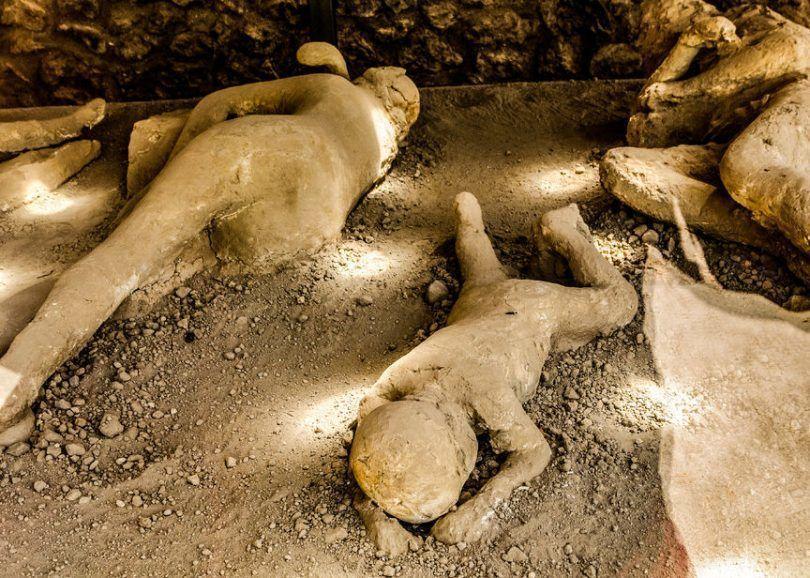
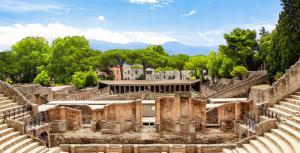
Leave a Comment